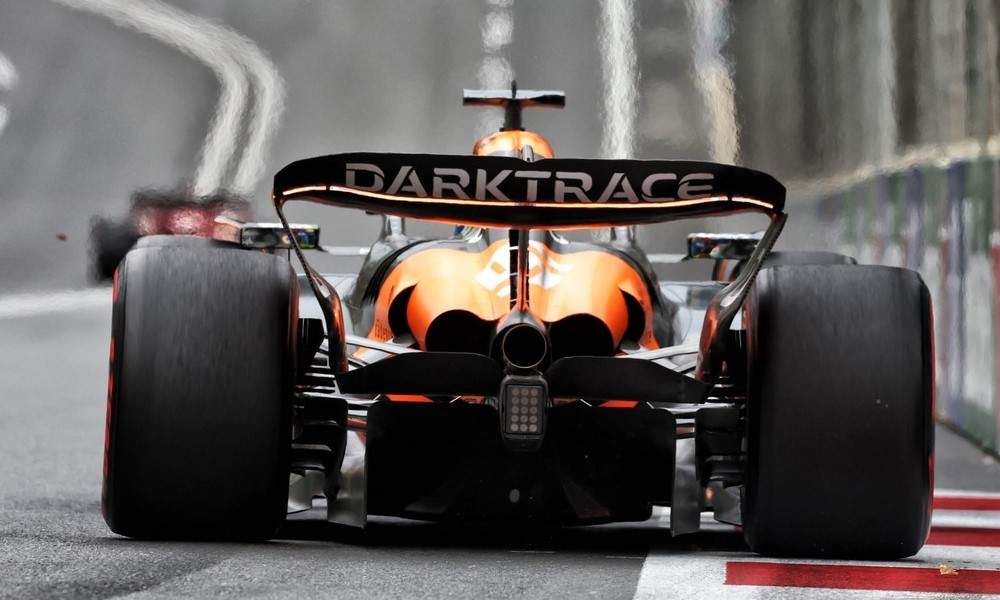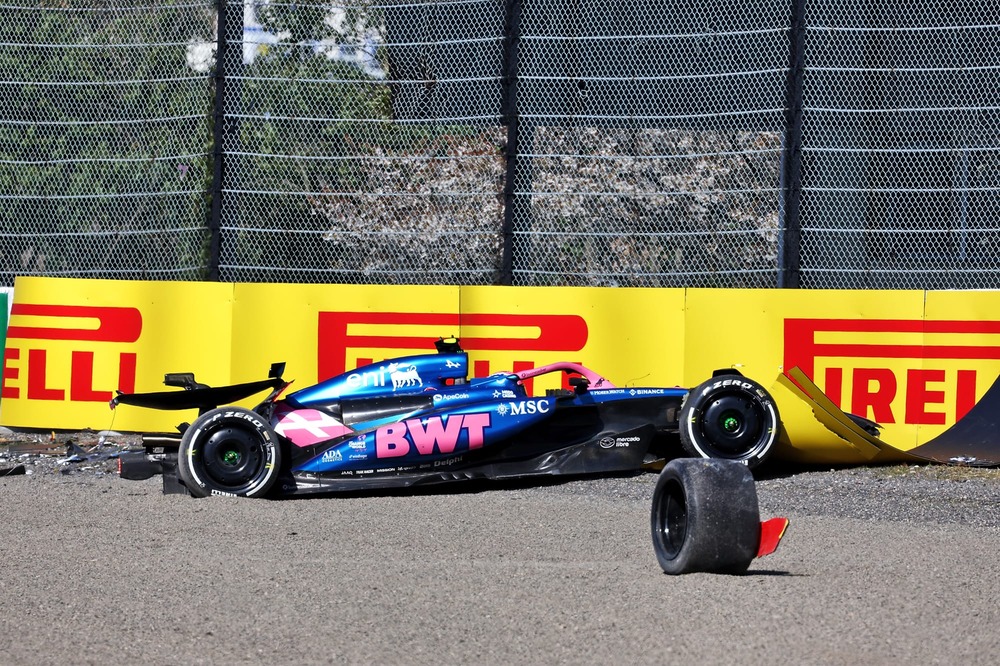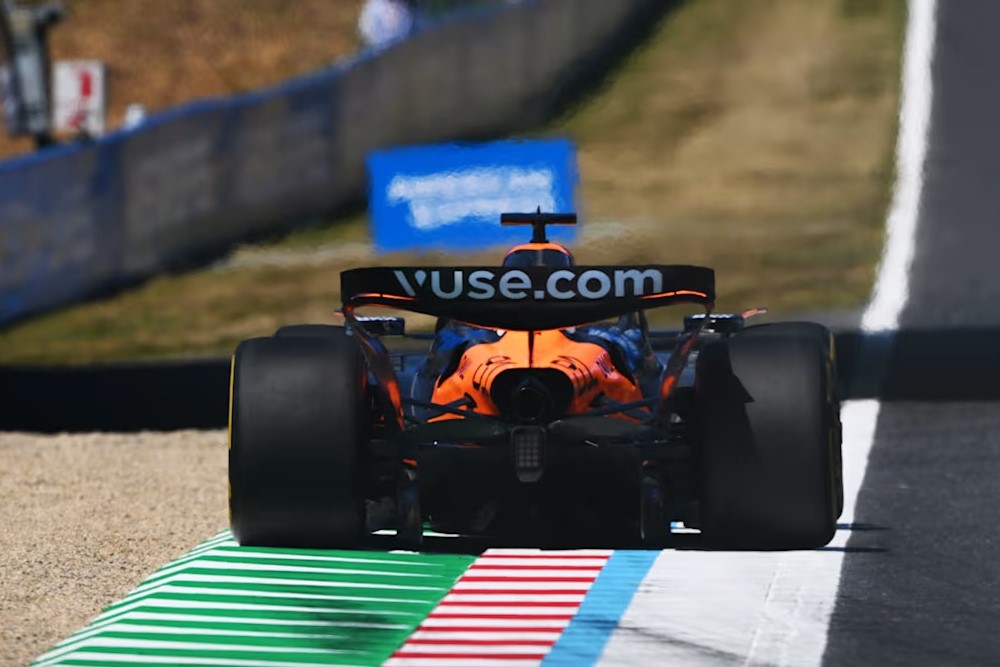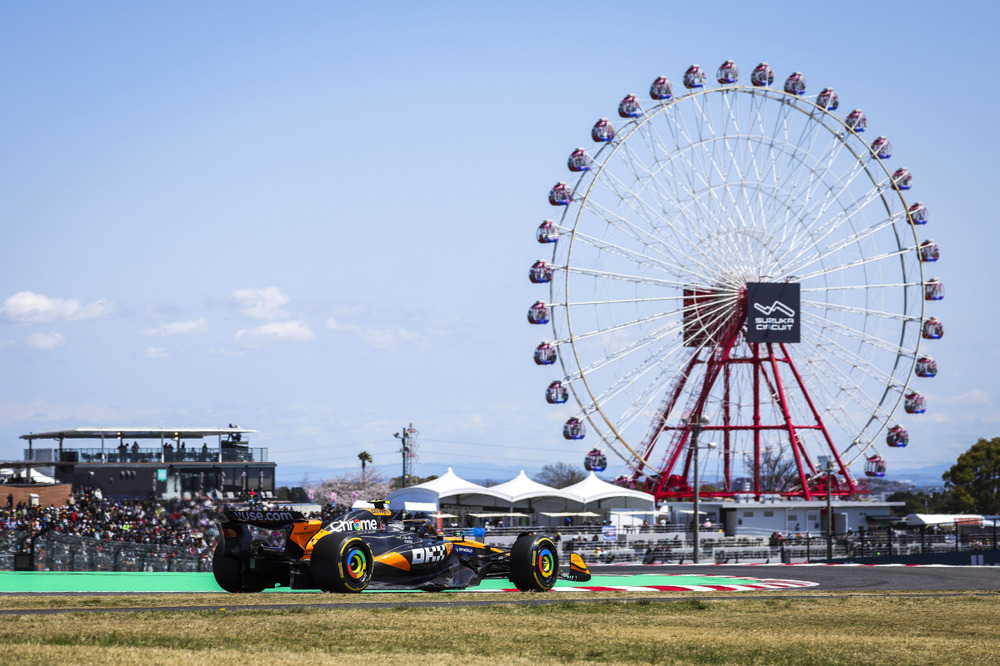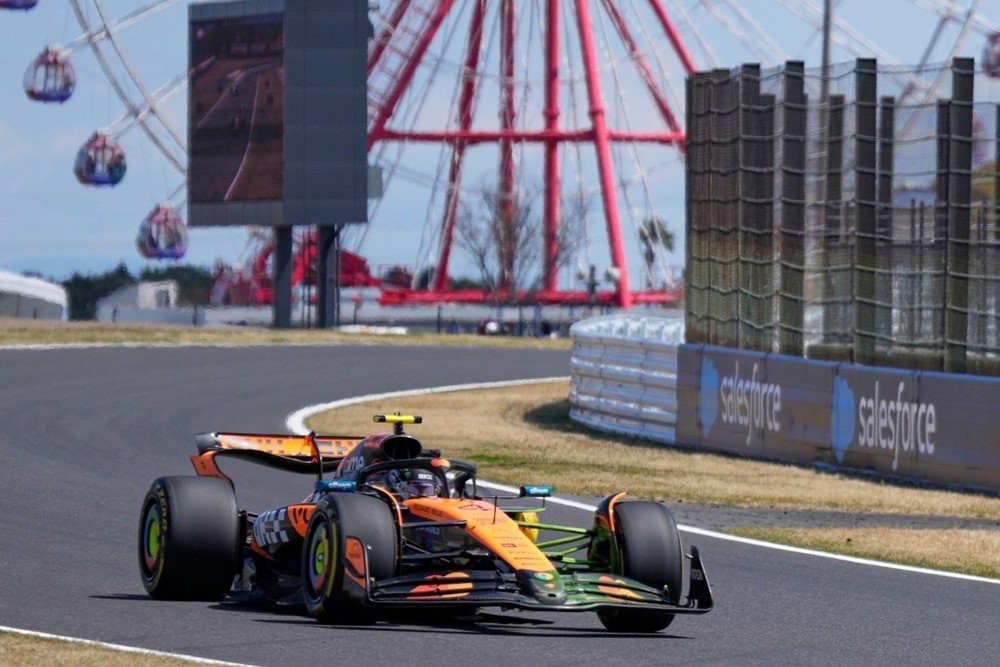The FIA has confirmed that stricter F1 flexi wing clampdown will be implemented for the 2025 F1 season.
This move comes after extensive analysis and ongoing debates about aerodynamic flexibility that dominated the 2024 season.
FIA’s new directive on F1 flexi wing clampdown represents a U-turn from its earlier stance in late 2024 when it expressed satisfaction with existing testing procedures.
At that time, all teams were deemed compliant with front and rear wing regulations following investigations prompted by complaints from Ferrari and Red Bull over McLaren and Mercedes’ wing designs.
Despite passing all static load tests, McLaren faced scrutiny over its rear wing during the Singapore Grand Prix but made minor adjustments after discussions with the FIA. These events underscored the need for more robust testing methods.
With the new F1 flexi wing clampdown, the FIA aims to eliminate any potential exploitation of the controversial feature to gain an unfair advantage through innovative but borderline-legal interpretations of the rules.
Flexible wings particularly front and rear wings have been a focal point of controversy in recent years. These components while passing static load tests in garages have shown a tendency to flex under aerodynamic loads at high speeds, offering teams an edge in terms of downforce and drag reduction.
According to FIA’s draft technical directive, stricter rear wing tests will be introduced starting with the 2025 F1 season-opening Australian Grand Prix on March 16, 2025.
The extensive tests will expand the scope of static deflection checks making it more difficult for teams to design wings that flex under racing conditions while remaining rigid during inspections.
Additionally, from the Spanish Grand Prix on June 1 new front wing tests will come into effect. These tests aim to further regulate the flexibility of front wing components which have been a “challenging area” for years due to varying aerodynamic loading patterns across teams.
The updated technical directive known as TD018 addresses specific areas of concern within Article 3.15.4 of F1’s regulations which govern the allowable deflection limits for various components under applied loads.
For example, when symmetrical loads are applied to both sides of a car’s front wing, vertical deflection must not exceed 15mm (now reduced to 10mm). Similarly, asymmetrical loads must not cause deflections exceeding 20mm while trailing edges of front wing flaps may only deflect up to 5mm under forces of 60 newtons.
This reduction effectively limits flexibility by one-third, making it significantly harder for teams to exploit aerodynamic tricks that rely on bending components.
“Following further analysis carried out by the FIA Single Seater Department after the conclusion of the 2024 season, we are committed to ensure that bodywork flexibility is no longer a point of contention for the 2025 F1 season,” said the statement.
“As part of this effort, we will be increasing the scope of rear wing tests from the start of the 2025 season, and additional front wing tests being introduced from the Spanish GP.
“This phased approach allows teams to adapt without the need to discard existing components unnecessarily.
“These adjustments are aimed at further refining our ability to monitor and enforce bodywork flexibility regulations, ensuring a level playing field for all competitors to promote fair and exciting racing.”
The phased introduction of stricter F1 flexi wing clampdown measures reflects the FIA’s intent to balance fairness with practicality. These changes follow a winter period during which the FIA conducted extensive reviews and consultations with teams regarding aerodynamic compliance.
Sources indicate that discussions centered around how best to modernize testing methods without stifling innovation or creating undue burdens for teams.
By delaying the implementation of stricter front wing tests until June, teams are given adequate time to adapt their designs without incurring unnecessary costs or wasting resources on components that would soon become non-compliant.
This approach aligns with Formula 1’s cost cap regulations, which limit how much teams can spend on development.
However, the implementation of F1 flexi wing clampdown has been met with mixed reactions within the paddock. Some team principals have expressed frustration over the timing and scope of regulatory updates, arguing that they disrupt ongoing development programs.
Ferrari team boss Fred Vasseur revealed they had abandoned development on the flexi-wing due to expectations that the FIA would clamp down on the practice last summer. However, this didn’t happen forcing the Scuderia to rush through its own design to Singapore – putting it at a disadvantage.
“We were convinced that [the FIA] would go for the ‘no go’,” Vasseur told Motorsport.com. “And it went for the ‘go’! So probably we lost one or two months.
“It’s difficult because with the cost cap you have to make your choices. It means that if you are convinced that it won’t be allowed, and you have to start to develop something, then it’s costing you time in the wind tunnel.”

